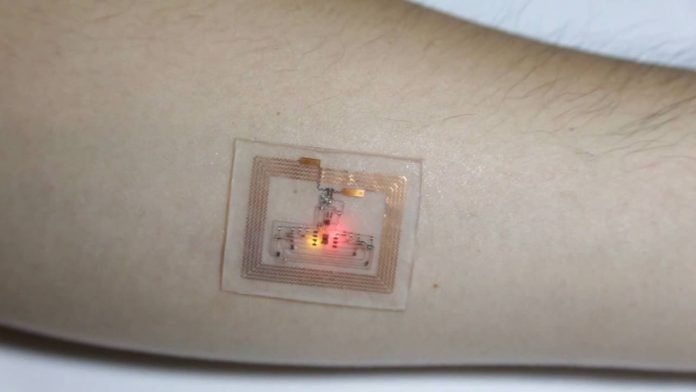A team of international scientists has developed an ultra-thin health monitoring device. The device looks like a tattoo and needs to stick to the skin, similar to a patch. This tattoo-like skin health monitor is capable of controlling skin temperature, UV exposure, heart rate, changes in skin color, and blood oxygen level.
A few years ago, a similar wearable device has become popular. This is because people are getting more conscious about their health. Other similar devices are worn as bracelets. Those work with batteries, but their lifespan decreases because of their battery performance time-wise.
To overcome this problem, researchers decided to develop a new monitoring device. So, they have created this Tattoo-like skin health monitor device, which works without a battery.
The key to powering the new device was capturing the small amount of energy emitted by smartphones or tablets. This makes use of near-field communications (NFC). NFC is a technology that employs electromagnetic induction between antennae inside portable devices. Radio frequencies are used to deliver information. This may be used as an energy source by making a battery unnecessary.
Key features of Tattoo-like skin health monitor device:
- The device is less thick than an ordinary decal.
- Flexible sticks on the skin easily.
- It collects information about the body and transmits it to nearby devices via a wireless medium.
The device contains a LED, a dye-based light sensor, and one other sensor equipped on the skin side. The LED shines inside and onside of the skin. The reflecting light is used to measure heart rate, changes in skin color, and oxygenation levels. The dye-based light sensor measures ultraviolet light. Another sensor is used to monitor skin temperature.
Also read: Artificial skin that could temporarily tighten the skin
It requires the phone or tablet providing NFC power be just a few inches away, such as carried in a shirt pocket. This is one major drawback of monitoring. Another option involves using a dedicated NFC device that offers more power. According to researchers, the monitoring device would prove useful in healthcare facilities and eventually to the population at large.
